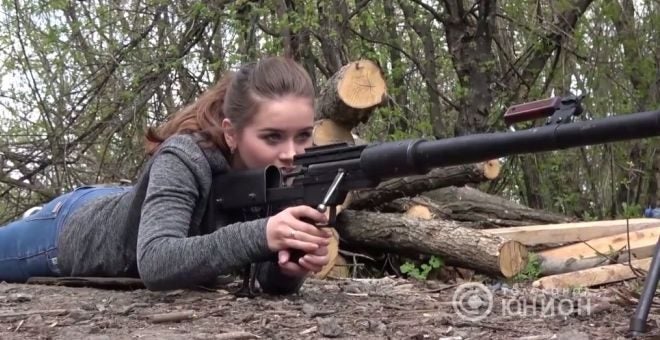A local TV channel of the self-proclaimed Donetsk People’s Republic has published a video telling about two domestically made firearms: an anti-materiel rifle and a twin-barreled machine gun. They adapted or used the parts of standard-issue guns to build weapon systems that could be used in different roles than the donor firearms. Let’s take a look at each of these guns.
“Shock” Anti-Materiel Rifle

This type of anti-materiel rifles is relatively commonly seen both in the Ukrainian and Middle Eastern conflicts. Such rifles are normally built around the barrels sourced from heavy machine guns. In fact, we have earlier reported about a similar rifle made in the self-proclaimed Donetsk People’s Republic.
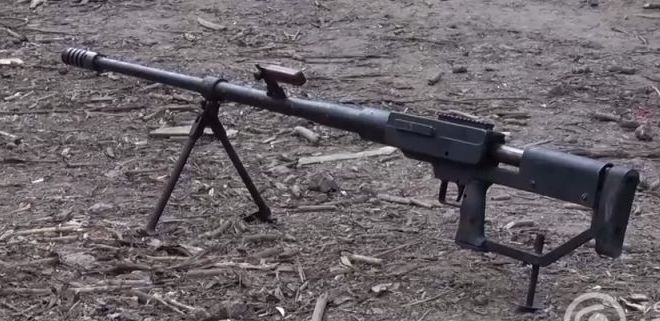
The barrel of the Shock rifle is borrowed from the NSV-12,7 Utes heavy machine gun which is chambered in 12.7x108mm. The rest of the parts including the trigger mechanism, receiver, bolt assembly, stock and muzzle brake are made locally. As in the case of many other such improvised firearms, most of the locally made parts have a simplest possible design which can be easily made in any shop that has a lathe and mill.
This first iteration of the Shock rifle is a single shot, however, they reportedly plan to upgrade it into a magazine fed one.

Overall, this looks to be a pretty crudely made rifle. It is probably not the most accurate rifle, but it should be effective in many combat roles. Probably the most attractive aspect of such rifles is the low cost of manufacturing granted they don’t buy the barrels but source them from dysfunctional machine guns or use their spare barrels.
“Petrovich” Twin Barreled Machine Gun

The second firearm recently made in the self-proclaimed Donetsk People’s Republic is not quite a separate machine gun design but rather a tripod that combines two standard PKT machine guns. PKT is mechanically identical to PK/PKM except it is designed to be used as a coaxial machine gun in armored vehicles and tanks.
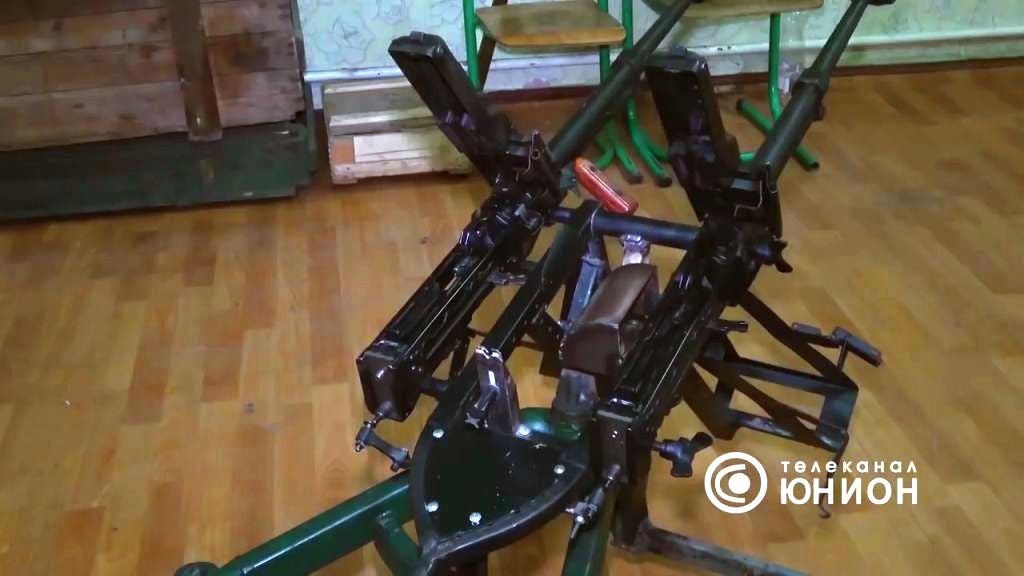
The tripod of this system has a provision to hold an ammo box for each of the machine guns. The overall weight with the ammunition (the number of ammunition is not specified) is said to be 30 kilograms (66 lbs). Petrovich machine gun is designed to be operated by a three-man crew.

The original conical muzzle devices of PKT machine guns have been replaced with huge muzzle brakes which I think is an overkill for such a weapon system. Even with a bare muzzle, it should have moderate recoil considering the weight of the whole assembly and its tripod mounted nature.
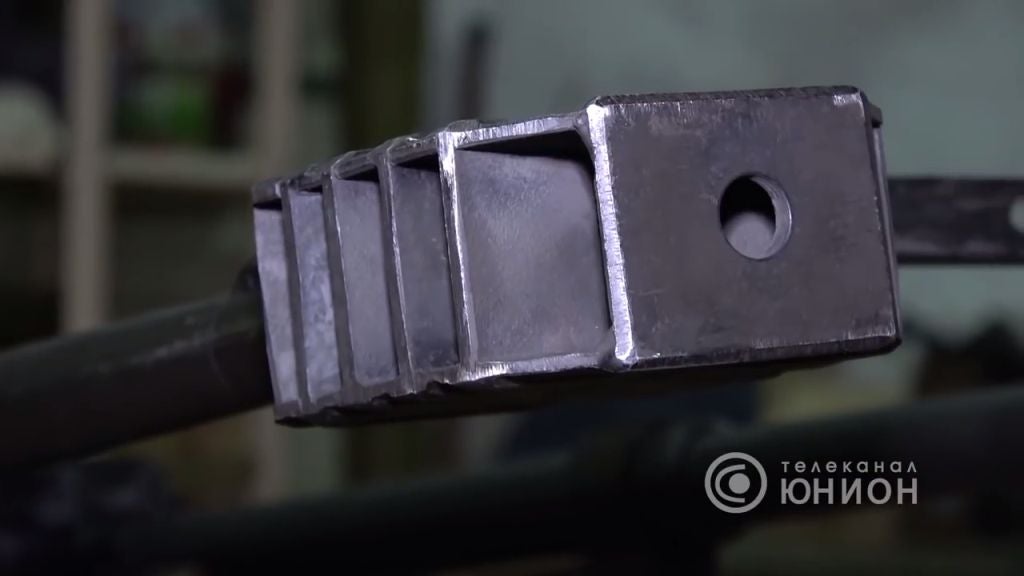
One of the PKT machine guns in Petrovich system has some sort of a DIY front sight attached to its barrel. It is basically a metal bar with two holes in it (see the image below). I assume this machine gun set is used mainly for approximate suppressive fire because the aiming devices leave a lot to be desired.
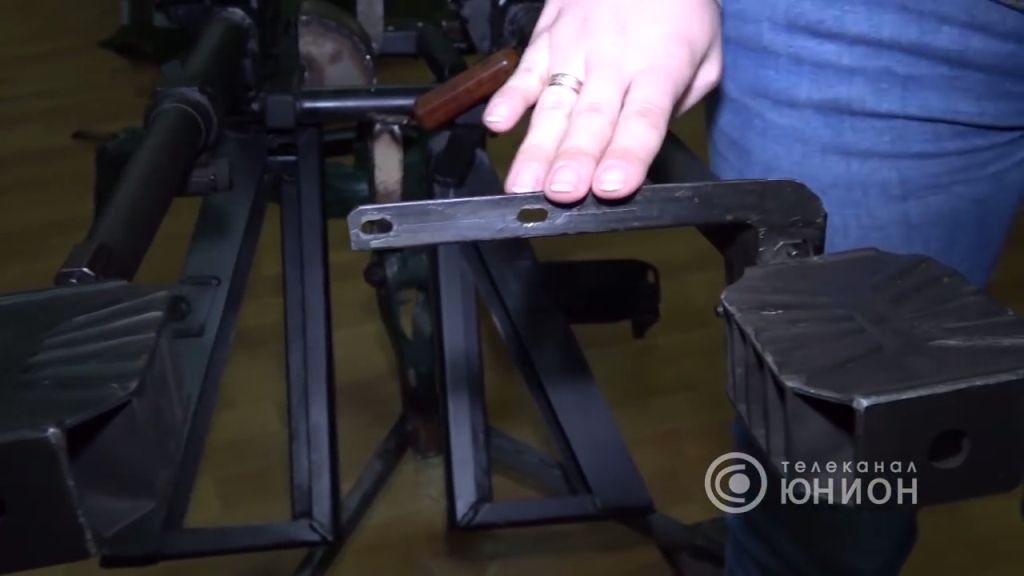
In the mentioned video, the reporter also says that the guns can be shot both separately and together. Unfortunately, it is not specified whether there is a synchronizing mechanism for alternating fire or by “shooting together” they mean shooting the two guns simultaneously. The alternating fire feature could possibly give some interesting advantages. It could allow a longer sustained fire keeping the original rate of fire (about 800 rpm) or as much as double the rate of fire (roughly 1,600 rpm) with the same duration of the sustained fire. Theoretically, they could make an electrically controlled mechanism which would allow adjusting the rate of fire. That sounds to be too much for such an improvised system, however, it should not be that difficult granted that PKT machine guns have electric solenoid triggers mounted on the rear of the receivers.

PKT coaxial machine gun
The reason why they use the PKTs instead of PKMs is that PKT has a very limited use in general. It is a great machine gun, but if not mounted in a vehicle, it is pretty much useless. There is a backup mechanical trigger on the PKT solenoid trigger, but that is a backup measure to be used in the tanks and armored vehicles. That mechanical trigger will allow the armored vehicle gunner to still shoot the gun if the electric trigger is down. It is possible to shoot the PKT when it is out of the vehicle, but it is an extremely awkward trick and there is no way to hit anything even at shortest ranges. So they probably have a bunch of PKTs laying around and the main reason for designing the Petrovich machine gun system should be the need to make those machine guns usable for the infantry.
The idea to expand the capabilities of the PKT machine guns and make them useful for the infantry is probably as old as the PKT itself. There were many attempts to make conversion kits that would add sights, stock, trigger, and bipod to these machine guns. Such kits not only would allow to use the spare PKTs by the infantry but also could be a handy tool to have in the armored vehicles. In case if the crew has to leave the vehicle and keep fighting outside of it, they could simply dismount the coaxial machine gun, install the conversion kit and have a powerful weapon to fight with.
In the image below, you can see a soldier holding a PKT that was converted to be used as an infantry machine gun.
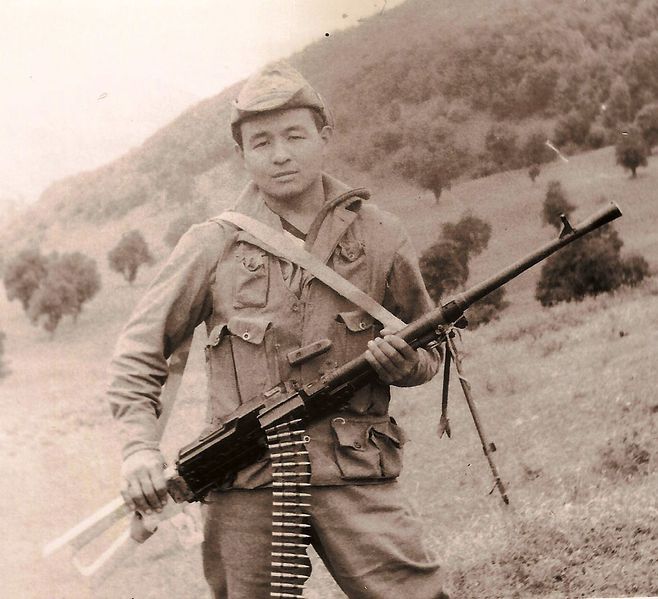
The set of images embedded below shows another development of such a system (reportedly in Ukraine, too).
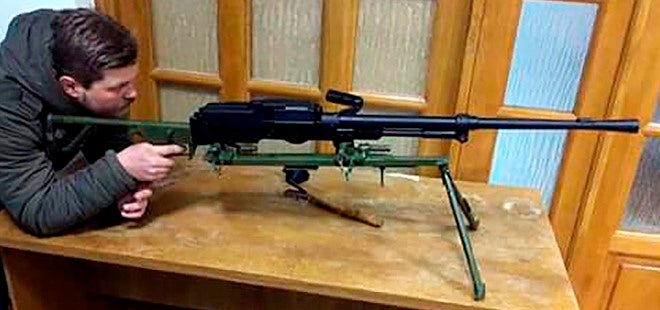

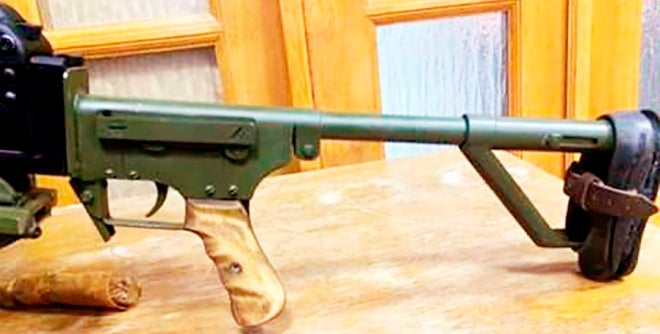
The metal bar over the trigger should be a side scope rail because this conversion unit has no iron sights
There was also a conversion kit developed in Tula. This was called “machine gun survival kit” (see the image below).
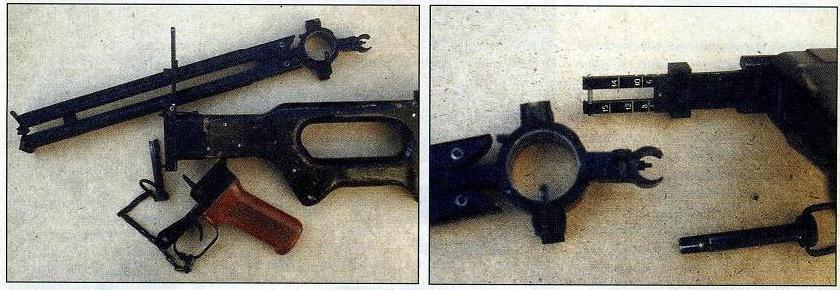
Note the iron sights arrangement on this Tula “machine gun survival kit”. The rear sight is attached to the stock and the front sight is integral with the clamp-on bipod
Overall, the concept of making a conversion kit for a ground use of a coaxial machine gun is not new. Back in WW2 (maybe even earlier) tank versions of MG-34 machine guns had such kits. At any rate, I think this is a great concept at least for PKT machine guns and for post-Soviet countries.
Sources:
TK Union. (2018, April 26). “Винтовка “Шок” и пулемет “Петрович”. Новое оружие ДНР. 26.04.2018, “В казарме”” [Video File]. Retrieved from: https://www.youtube.com/watch?v=DxEx1PtRyho
Images from: armor.kiev.ua, forum.guns.ru, spec-naz.org
 Your Privacy Choices
Your Privacy Choices
